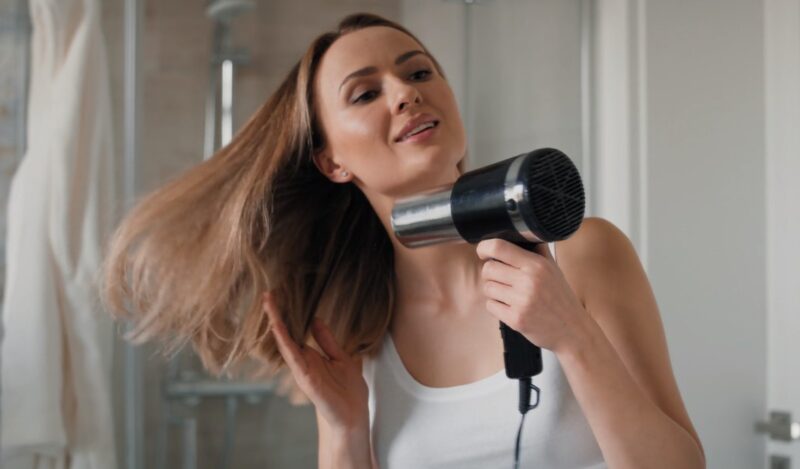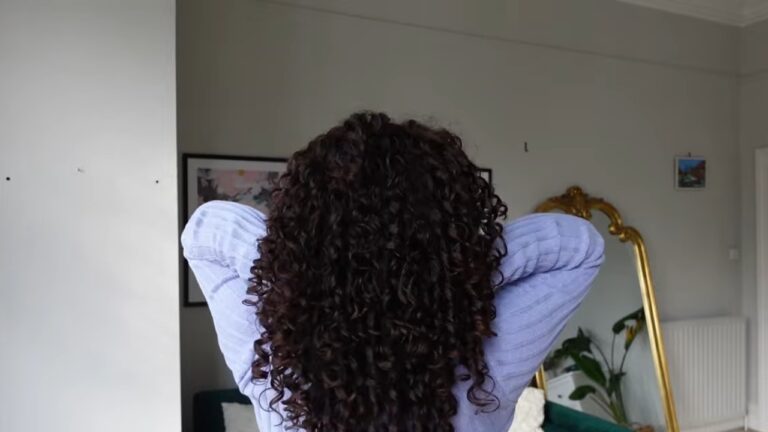The electricity usage of household appliances is essential for managing my energy costs and reducing my environmental impact. Among these appliances, hair dryers are a common fixture in many homes, including mine, yet I often overlook their energy consumption.
I plan to explore the range of wattage in different hair dryer models, examine the factors that influence their electricity usage, and understand the broader implications of their use.
By gaining insights into the energy demands of hair dryers, I can make more informed decisions about how I use these appliances, contributing to my personal savings and promoting environmental sustainability.
I will discuss the following:
- The importance of being aware of the energy consumption of hair dryers, a common household appliance
- A practical approach to calculating the cost of using a hair dryer, factoring in the average wattage and local electricity rates.
- Strategies for reducing energy consumption include using lower heat settings and reducing usage time.
Let’s get started.
Calculating the Cost of Operating a Hair Dryer
The cost implications of using a hair dryer are a critical aspect of managing household energy expenses. Offers a practical framework for calculating these costs, taking into account the average wattage of hair dryers and varying state electricity rates. Consider a hair dryer with an average wattage of 1,800 watts.
If you use this hair dryer for 10 minutes every day, the energy consumption can be significant over time. To calculate the cost, one must consider the local electricity rate, which varies from state to state. For example, if the average electricity rate is $0.13 per kWh, using a 1,800-watt hair dryer for 10 minutes daily translates to about 0.3 kWh per day.
Over a month, this usage amounts to approximately 9 kWh. At $0.13 per kWh, the monthly cost of operating the hair dryer would be about $1.17. Annually, this adds up to around $14, a figure that can vary with changes in electricity rates or usage patterns.
Basic Electricity Usage of Hair Dryers

Hair dryers are a staple in many bathrooms, but their energy consumption can vary significantly. According to EnergySage, hair dryers typically use between 1,500 and 2,000 watts of electricity, depending on the model. This wattage range is moderate when compared to larger appliances but is significant enough to warrant attention.
The duration of use plays a pivotal role in determining the total electricity consumed. For instance, using a hair dryer for 10 minutes per day at an average wattage of 1,800 watts results in a consumption of approximately 109.5 kWh per year.
Mother Earth News provides a more personalized perspective, detailing an experiment using a Kill a Watt meter to measure the electricity usage of a hair dryer. The findings were eye-opening: on a low setting, the hair dryer used 402 watts, but this surged to 1440 watts when switched to high.
This experiment underscores the substantial difference in energy consumption based on the heat settings of the hair dryer.
Factors Influencing Electricity Consumption

The electricity consumption of a hair dryer is dynamic and influenced by various factors. Understanding these can help in optimizing their use for energy efficiency.
| Factor | Description | Impact on Electricity Consumption |
|---|---|---|
| Heat Setting | Hair dryers often have multiple settings for temperature. Higher heat settings consume more electricity. | Switching from a low to a high setting can significantly increase wattage, sometimes tripling it. |
| Duration of Use | The length of time the hair dryer is used during each session. | Longer usage times lead to higher electricity consumption, though hair dryers are typically used for short durations. |
| Model and Efficiency | Different models of hair dryers have varying levels of energy efficiency. | More efficient models consume less electricity for the same output. |
| Motor Speed | The speed at which the motor operates, often linked to the fan speed in the dryer. | Higher motor speeds can lead to increased energy use. |
| Additional Features | Features like ionic drying or multiple fan speeds can impact energy use. | Some features increase energy consumption, while others, like energy-saving modes, can reduce it. |
Energy Efficiency and Savings

Hair dryers, though not the most energy-intensive appliances in a household, can still contribute significantly to energy consumption, especially in homes where they are used frequently. Understanding and implementing energy-efficient practices with hair dryers can lead to noticeable savings in energy costs and a reduction in environmental impact.
Reducing Usage Time and Opting for Lower Heat Settings
One of the simplest yet effective ways to save energy when using a hair dryer is by reducing the overall usage time. For instance, towel-drying hair before using a hair dryer can significantly decrease the amount of time the dryer is in use.
Many hair dryers come with multiple heat settings. Using a lower heat setting not only consumes less energy, usually 50%, but is also gentler on the hair, reducing the risk of heat damage. It’s a win-win situation where you can maintain healthy hair while also conserving energy.
The Impact of Heat Elements and Motors

The energy efficiency of a hair dryer is largely determined by its heating element and motor.
Traditional hair dryers use metallic or plastic heating elements which are less energy-efficient. In contrast, newer models often feature ceramic, ionic, or tourmaline heating elements that not only reduce energy consumption but also provide a more even heat distribution, which is better for hair health.
Similarly, the efficiency of the motor plays a crucial role. Brushless motors, for instance, are more efficient and have a longer lifespan than conventional brushed motors.
The Role of Smart Features in Energy Savings
Modern hair dryers are increasingly equipped with smart features aimed at enhancing energy efficiency.
Features such as automatic shut-off when the dryer is not in use, multiple heat and speed settings for better control and efficiency, and sensors that adjust temperature and airflow based on hair moisture levels, all contribute to reducing energy consumption.
These smart features not only make the hair dryer more convenient to use but also ensure that it operates at optimal energy efficiency.
Environmental Impact

The use of high-wattage appliances such as hair dryers has a more profound environmental impact than one might initially assume. It’s not just about the electricity that these devices consume; it’s also about understanding the source of this electricity and the broader environmental implications associated with its generation and use.
The Link Between Electricity Use and Greenhouse Gas Emissions
In many regions, electricity is predominantly generated from fossil fuels like coal, natural gas, and oil. These sources are known for their high carbon emissions, contributing significantly to greenhouse gases in the atmosphere.
When we use high-wattage appliances like hair dryers, the demand for electricity increases, which in turn can lead to more fossil fuel burning and higher carbon emissions. Therefore, the seemingly simple act of drying hair can have far-reaching effects on the environment.
Carbon Footprint of Hair Dryers
Every appliance contributes to the overall carbon footprint of a household. Hair dryers, especially those with high wattage, can add a considerable amount to this footprint. The carbon footprint is a measure of the total amount of greenhouse gases produced to directly and indirectly support human activities, usually expressed in equivalent tons of carbon dioxide (CO2). By using hair dryers that consume a lot of electricity, we inadvertently increase our CO2 emissions.
Mitigating Climate Change
Understanding the environmental impact of our daily activities, such as using a hair dryer, is crucial in the fight against climate change. By managing the energy demands of these appliances, users can play a part in reducing their personal and collective carbon footprints.
Simple actions like reducing usage time, opting for energy-efficient models, and using renewable energy sources for electricity can have a significant impact.
Renewable Energy and Hair Dryers
One way to mitigate the environmental impact of using hair dryers is by sourcing electricity from renewable energy. Solar panels, wind turbines, and other renewable sources produce electricity with little to no greenhouse gas emissions.
As the grid becomes greener, the environmental impact of using electric appliances like hair dryers diminishes. Consumers can contribute by supporting renewable energy initiatives or installing renewable energy systems in their homes.
FAQs
Why does a dryer take 2 hours?
A dryer might take 2 hours due to factors like a heavy load, inefficient heating element, clogged lint filter, or poor ventilation. It’s also possible that the dryer’s settings are not optimized for the type of fabric being dried.
How much does it cost to run a dryer for 40 minutes?
The cost depends on the dryer’s wattage and your local electricity rate. For example, if a dryer uses 3000 watts and the electricity rate is $0.12 per kWh, running it for 40 minutes would cost about $0.24. (Calculation: 3000 watts/1000 x 0.67 hours x $0.12).
How many watts is a washing machine?
A typical washing machine uses between 350 to 500 watts. However, during the heating cycle, it can use up to 2000 watts. The exact wattage depends on the model and its settings.
Is 1200w enough for a hair dryer?
Yes, 1200 watts is generally enough for a hair dryer. While it may not be as powerful as higher wattage models, it is sufficient for regular drying and can be more energy-efficient.
Final Reflections
The wattage of hair dryers and their impact on my electricity consumption and cost is a complex issue. By understanding the factors that influence their energy use, like wattage, settings, and how long I use them, I can make more informed decisions.
If I implement energy-saving practices, such as cutting down on usage time and choosing energy-efficient models, I can achieve financial savings and lessen my environmental impact. Ultimately, using hair dryers mindfully is a small but important step I can take towards adopting more sustainable living practices.
If your interested in similar subjects, be sure to pay a visit to our website.








